“Quakes” was boring and while “quality of life” had some promise, I’ve spent two or three weeks failing to write it so “quick guide to Iceland” it is. It feels a bit like cheating, so I’m sorry about that, but I guess it works as an “Iceland 101” primer?
Before you go
Iceland is on the same time zone as London in winter and an hour behind in summer. It uses the same 2-pin plugs and electricity as continental Europe and drives on the right like them as well. The local language is Icelandic, which is fairly closely related to the Old Norse the Vikings spoke in the ninth century, and the currency is the Icelandic kroner, or ISK. As of today, $1 USD is equivalent to about 124ISK / 1 euro is about 138ISK / £1 is about 151ISK. There are plenty of banks and bankomats/ATMs in Reykjavik and at most roadhouses but cards are accepted pretty much everywhere. You may need coins for lockers at local swimming pools and if you stay in a mountain hut, the showers may be coin-operated. If you’re taking a yellow Strætó bus, they take cash (also there’s an app, month or multi-month tickets and 20-packs of single tickets – these can be bought online or at a surprising number of shops, supermarkets and sports centres) but not bank cards. The little silver 1kr coins are not worth the metal they’re made of – do your utmost to pass them on.
In the event of an emergency, call 112 for police, fire or ambulance.
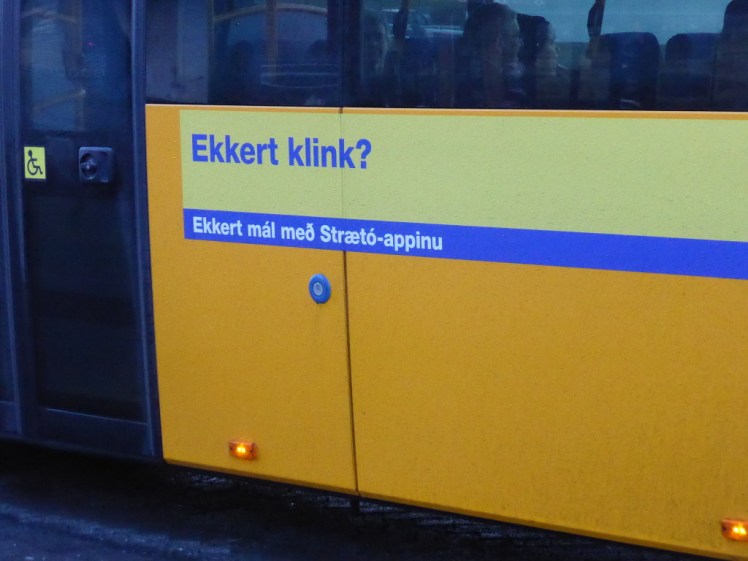
Arriving
Pretty much all international flights come into Keflavik, the old American airbase on the western tip of the Reykjanes peninsula. If you’re arriving by ferry from Denmark or the Faroe Islands, it comes in at the far eastern point of the country at a tiny beautiful village called Seyðisfjörður. To get from the airport into the city, you can either hire a car, book a taxi or take one of the many public buses. The buses are by far the cheapest way to do it; most of them have wifi and for a small extra fee, most companies will drop you at or near your accommodation. Buses are generally waiting right outside the revolving doors at arrivals.
If you’re continuing your journey by air to one of the smaller towns, that flight will almost certainly be from Reykjavik Domestic, which is a tiny airport in the city centre. The public buses can drop you there as well but bear in mind it takes at least an hour to get there, so leave plenty of time for your connection, at least two hours, preferably three.
If you’re continuing your journey by bus, the BSI terminal is almost certainly where you’ll be getting the bus – it’s virtually across the road from Reykjavik Domestic and most public buses can drop you off there as well. You’re best getting the Reykjavik Excursions/Flybus if you’re heading to the BSI terminal.

Excursions
If you’re in Iceland long enough to think about excursions outside Reykjavik, the three essentials are the Blue Lagoon, the Golden Circle and the South Coast tour, in that order. You already know about the Blue Lagoon, the famous geothermal spa. You should also know that it’s pretty expensive and that you need to book in advance online, often a good couple of months in advance. The Golden Circle is a day-long trip around a national park, a massive waterfall and a field of hot springs including one that spouts fifteen feet into the air every five or ten minutes. Other stops depend on the weather, the traffic and the driver. Finally, the South Coast tour takes in two famous waterfalls, a drive past Eyjafjallajökull, the famous black sand beach and a glacier hike, if you so desire.
Other tours include a long full-day trip around the Snæfellsnes peninsula – this is a more chilled tour because it’s all about the views and nature rather than ticking off “yep, seen that, seen that, seen that”, various adventure tours like snowmobiling, ice-hiking, whitewater rafting, lava caving, descending into the magma crater of a volcano or exploring ice caves on the glaciers. Those ones require professional guides and equipments; anything that’s just driving and looking can be done on your own.
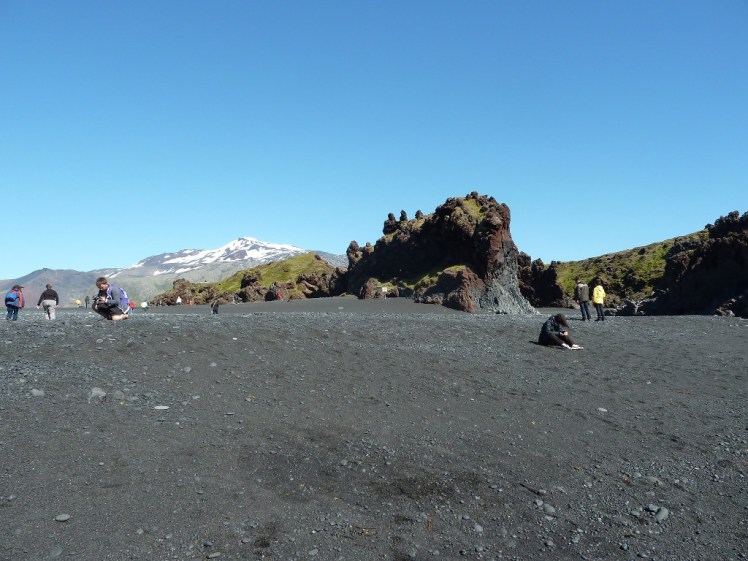
Eating & drinking
Alcohol is famously expensive in Iceland and as a general rule, you can’t buy it in supermarkets. Every settlement has a Vínbúðin, a state-owned alcohol shop that opens at restricted hours – the more remote the settlement, the more restricted the hours. That can be as little as an hour a week in the middle of nowhere or 11-6 Monday to Saturday in central Reykjavik.
It’s openly available in bars and restaurants and the like but again, it’s expensive. Iceland’s local drink is a spirit called Brennivin, usually known as Black Death in English. It’s a 37-40% ABV carraway-flavoured spirit made from grain or potato. Beer is also popular and Iceland has several local brands – look out for Egils and Viking.
For food, there are supermarkets in most settlements, usually part of the “roadhouse”, which is a combined fuel and food stop. A lot of these places sell fast food for eating before heading out on the road again – Iceland’s signature dish is pylsur, a hotdog made with lamb, and these are always available at roadhouses, along with coffee. Major supermarkets include Krona, Bonus, 10-11, Samkaup Strax, Hagkaup and Netto.
You may well find such exotic surprises as whale and puffin in the freezer cabinets in supermarkets. These are more for the tourists than the local. Square your own circle when it comes to whale meat but Icelanders do manage the puffin hunts – there is a limit to the number that can be hunted and they must be of a specific age, ie not young chicks or breeding adults. You can also get your hands on hákarl, Greenland shark that has been buried and fermented in order to make it merely revolting rather than actively toxic. I’ve not tried it myself but I hear the smell is memorable and the best that can be said of the taste is that it’s a bit like really strong cheese and you drink ice cold Black Death with it to numb your tastebuds, so it’s not something I’d personally recommend to you.

Driving
Outside Reykjavik, everything is accessible by the Ring Road and as a general rule, if you’re driving the Ring Road, you don’t need a satnav or GPS because everything is “just follow the Ring Road”. The speed limit on the open road is 90kph, 80kph on gravel road. Limits decrease as you approach towns and although it’s generally 50kph in town, it can drop as low as 20 or 30.
You don’t really need a 4×4 if you’re just driving the Ring Road. Yes, even on gravel roads. I drove a teeny-tiny Hyundai i10 quite happily on gravel roads. You only need a 4×4 if you’re going on mountain roads and a lot of them are legally banned to rented cars regardless of size and power. Stay on the road (or track) at all times; it’ll illegal to drive offroad in Iceland because it leaves permanent damage in the landscape and Iceland is kind of into conservation.
Fuel is readily available although you should probably refuel in Vik if you’re heading east because you won’t find anything for at least an hour and then nothing for at least an hour after that. Icelandic fuel pumps require you to tell them how much fuel in kroner to put in before you lift the pump, which is fun the first time you fuel a car. Alternatively, there’s usually a button to “just fill up”, which saves you having to guess at the tank’s capacity and calculate the cost before starting. Most rental cars will give you a token to scan to get a discount on fuel at their own favourite chain and they’ll often include a leaflet showing the location of all their outlets.
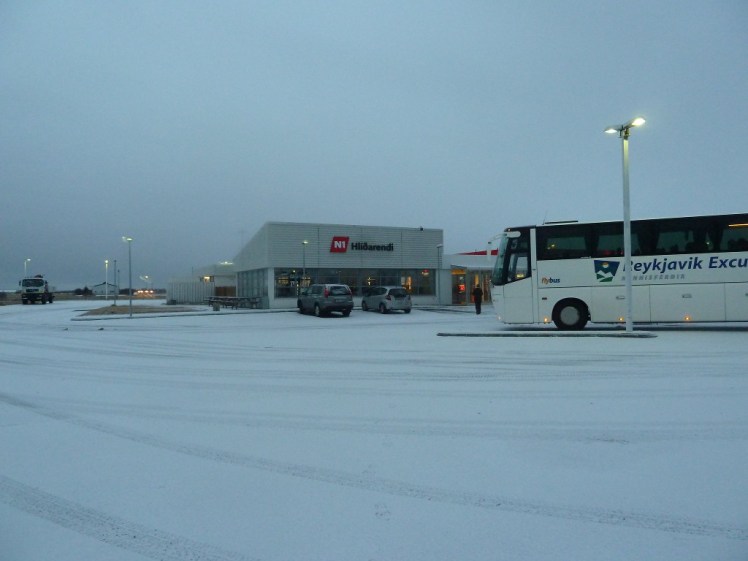
Environment
I’ve already told you not to drive offroad. Don’t walk offroad either – don’t leave marked trails or paths, never walk in the moss (it takes decades to recover from a single bootprint) and never ever scratch your name in anything. It may be ok at home to throw your apple core away but Iceland’s climate means it’ll take ten times as long to decompose in Iceland as at home.
Don’t stick any body parts in geothermal water, not even at Geysir. The water trickling around the site is literally boiling. Don’t go swimming in any random bit of geothermal water you see, for the same reason. There’s a book of Thermal Pools in Iceland available in English in every bookshop which will tell you which ones are safe. Alternatively, every settlement has a heated outdoor swimming pool filled with geothermal hot water – last time I went, average price was around 400ISK and there’s always at least one hotpot.
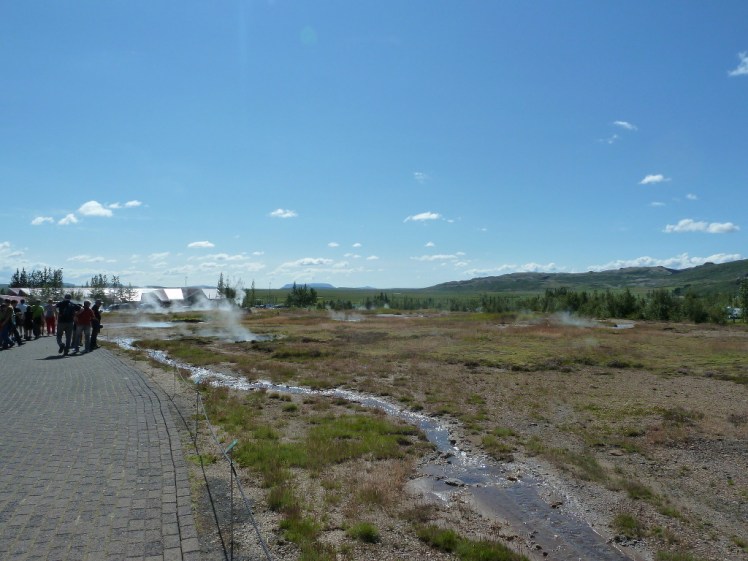
Winter
Many roads close in Iceland, including huge parts of the Ring Road. Even the road from Reykjavik to Þingvellir, which feels like a tame and touristy part of the country, is frequently closed in winter because of high snow and strong winds and low visibility and it’s not unknown for it to close in summer too. The vast majority of Interior roads – those that lead from the Ring Road into the middle – are closed from around September to June, which gives you a pretty short window for getting to places like Landmannalaugar, Þórsmörk and Askja. These roads can sometimes be open to tour companies with experienced drivers with the correct paperwork and a tough enough vehicle; as a tourist, don’t even think about it.
If you’re sticking to Reykjavik, then your standard winter clothes will probably be fine. Make sure you’ve got a half-decent waterproof. If you’re heading out into the countryside, you’ll need some good winter stuff, including some waterproof boots with good soles and an actual warm coat. Thermal base layers too, please. No jeans. I’m going to do a “What to wear in Iceland in winter” post at some point but I assure you, it won’t include any pretty cashmere sweaters, leather-effect leggings or any skirts at all. You might be ok in the city in those but you’ll freeze at Þingvellir and you’ll die on a snowmobiling trip. Warm up after a day out by going to one of the local swimming pools to thaw in their hotpots.
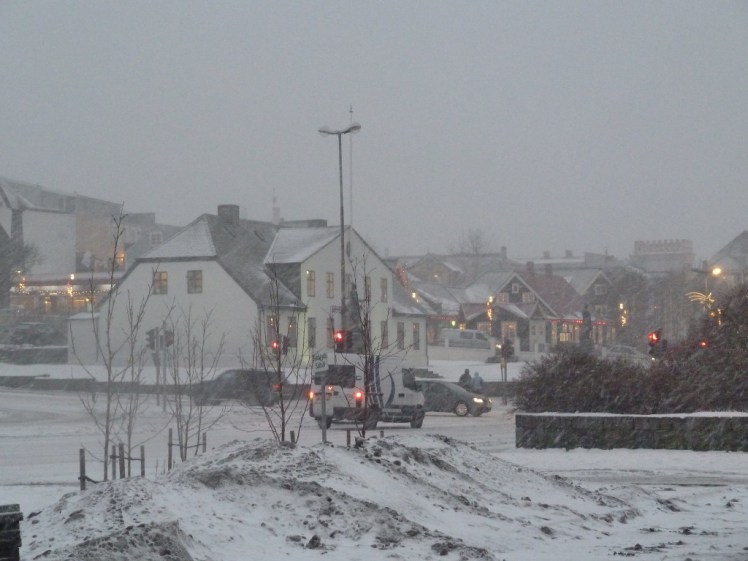
Is there anything else you think should be included in a Quick Guide to Iceland? Anything you wish you’d known before you first went?